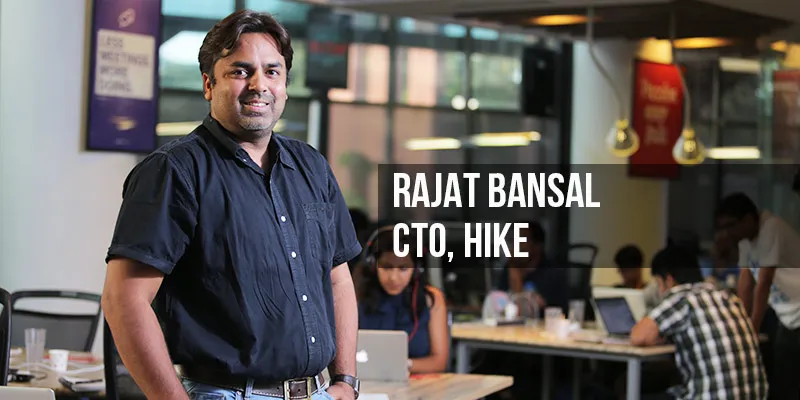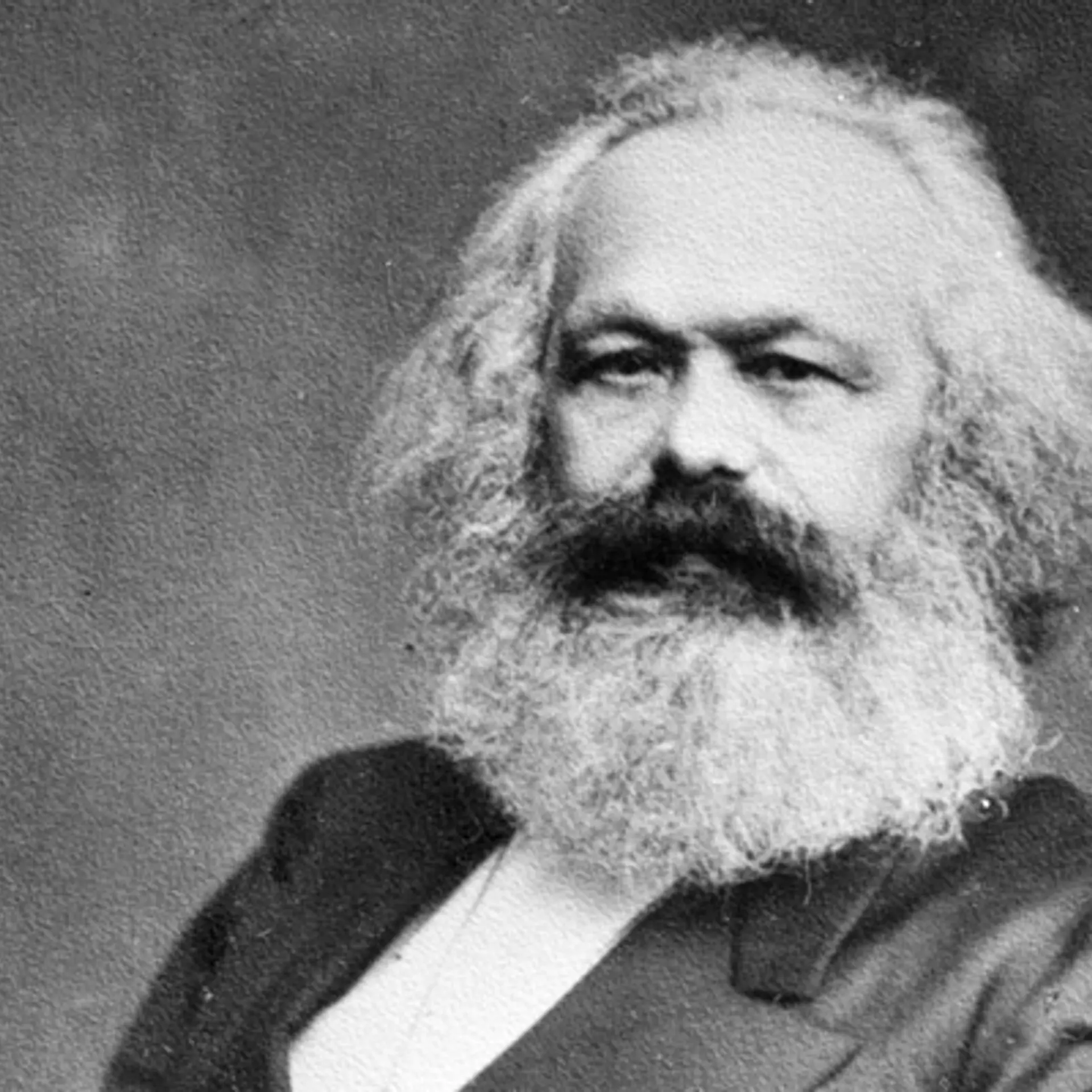[Techie Tuesdays] 'My mission is to bring a billion people online': Rajat Bansal, CTO, Hike
Rajat Bansal was almost sure he wouldn’t study medicine. Coming from a family of bankers, there was a high probability that he would’ve been in finance. Born in Meerut, he spent most of his time in Delhi, and belongs to the city of hills, Dehradun. Childhood was spent without much worries, and there was no pressure to look at the future.
"There was never a mindset that I have to take engineering; people take science, so I also took science. By the time I reached 11th, I started liking maths and engineering drawing, which became my favorite subject."
College, NIIT and the love of computers
"Midway in 11th, I realized there is something called ‘entrance’ for which you need coaching."
So Rajat joined a correspondence course called Agarwaal Classes for IIT preparation. They would send him a batch of problems to solve. Even if had paid for the class, they wouldn’t send the next batch of problems unless you had solved the current set of problems. This made sure that Rajat worked hard. As a result, he topped his school in Delhi and cleared IIT.

Rajat scored a rank of 1036, but this was not enough for a Computer Science or Electronics seat in any of the IITs as it was an upcoming and sought after field. Rajat took admission in Delhi Institute of Technology(NSIT). Since it was a government institute, it was very subsidised with only 1200/year as the fee, and this included everything.
"On the first day of college our professor showed us the CAD lab and the mainframe in the lab, as part of the orientation. He told us this costs 50 lakhs, we were all dumbstruck and mesmerised that there could be machines so powerful. And later in retrospect, I try to figure out that what was it we could use those mainframes for?" Rajat recalls.
The students were lucky that they got to work on such infrastructure which was quite rare to find even in some big companies at that point in time. In those days there were no big expectations, and people were quite happy getting the expected output from the program. Soon, curiosity got them and they decided to find out the root password.
"We started wondering 'ki yaar, root ka password kaise mailega aur lab assistant to dene se raha.' (How will we get the root password; the lab assistant won't give it to us?). So I teamed up with someone and created a shell which would ask for login and password. And as soon as the user enters it, the shell will log the details and kill itself, thus revealing the real shell. And it worked. It was a very primitive example of phishing."
Coming from a banking background, Rajat also developed an interest in stock markets. He bought his first share when he was in second year of college. It was of an agro-based company Aravalli industries. The share price was around Rs 5-6. Rajat bought 100 of those shares.
"I was pretty sure that if it was not for engineering, it would have been something related to finance".
During all this time, Rajat never had a computer at home and most of his learning was limited to college. To counter this, Rajat joined NIIT under a scholarship scheme - NIIT Bhavishya Jyoti Scholarship. His centre was close to his home, so he could stay at the centre till late. NIIT also had centres at Cannaught Place where people could book a computer for six hours and practice. This made sure the problem of access to computers was solved for Rajat, as he’d travel to CP every weekend to use them.
"At that time, even access to computers was a privilege for me," recalls Rajat.
First Stipend
In his third year, Rajat did and internship with IISXOX Asia Pacific Limited. He used to travel from Rohini to Okhla. There was a paper published in a Graphics Conference, which he had to implement. That was the first professional project he worked on and finished in eight weeks. However, he was not able to do his project reports, which took another weekend to complete. There was no agreement for a stipend, but looking at his work, they paid Rajat Rs 4,800. This was a big amount for Rajat at a time (1996) when there was no concept of stipends. They made him an offer, too.
"Being a startup, the salary was pretty okay- about 1.44 lakhs. I liked it so much that I decided to join them," Rajat says.
Do you want to be the 1 in 7 or the 1 in 10,000
During his final year, Rajat received multiple offers from HCL, Siemens and Infosys. Siemens was quite a big company and the offer was around 30-40 per cent more than what he was offered at the startup. Rajat was completely confused about which offer to take. He asked a relative of his who was at a senior post in a big company. He still remembers the advice his uncle gave.
"How many employees are there in Siemens," his uncle asked him.
"Probably around 10,000," Rajat replied. Then his uncle asked,"And how many employees are there in this startup?"Rajat said, “Seven employees,” to which his uncle questioned, “What will you be there?”
"1 in 10,000," Rajat said.
"And what will you be here," he asked further.
"1 in 7," responded Rajat.
"Then you have the answer," his uncle said.
“That cleared everything for me. The project which I did for the company became my money minting machine as I used to show it around in tech fest, and win awards. Later I got it to the company I worked for, and they cleaned it up and packaged it in a nice way and sold it.” Rajat says.
The place Rajat worked in was a startup, but there was no such thing as a startup culture in the manner it is preached now. He says,
"We only had two emails: staff@company and staff-ic@company(ic was Indrajeet Chakraborty, our MD, and the email ID was for team where he was not meant to be a part of the discussion). We had seven chairs and computers facing a wall, and if you turn around it became a discussion."
There was a time when they had a client form Israel.To show him the entire team got together and made a prototype in 72 hours, working hard day and night.
"That was my first hackathon of sorts, where we worked day and night," Rajat recalls.
There was another time when they entered into a joint venture with IIT Kanpur to develop war games simulations for the Indian Army. The core engine for the software was from a German company, and the license for it was around Rs 1 crore. They had the software installed on only one machine and had to carry it around whenever they had to show demos and make modifications to it.
In the first month of his job, Rajat lost his father and things got tough. As the job progressed, he wasn't able to travel much and unable to commit time. Though his colleagues were very supportive of him, Rajat felt he wasn't doing justice to his job. He quit IISXOX Asia Pacific and joined Adobe Systems in June 2000.
Import - Export Jodi
Adobe was starting up in its office Noida. There, Rajat started studying File Format Engineering. He had to figure out a way to convert Photoshop files to Illustrator, and make them compatible to each other. The project lasted around a year and a half. Working on this project earned him widespread reputation when it came to Photoshop expertise. And whenever anyone had a problem opening Photoshop files, Rajat was the go-to person.
"We were a team of two people, me and Manish Gupta. My job was to import Photoshop files into other softwares, and his job was to export Photoshop files. So people use to say, ‘Accha, yeh import-export jodi hai,’" Rajat says.
Starting up on the side
While working with Adobe, Rajat also decided to start a project on the side. He along with a friend was trying to bridge the gap between schools and colleges by providing more career options to students, and also providing counseling to them. Friends and family were supportive and informally committed close to INR 1 crore to the project. After working on six to seven months on it, one day they saw a half-page advertisement in Times of India about eGurukul.com. As they discovered more about it, they realized it had too much of an overlap with their offering.
They decided to shut it down as someone who could provide a half-page ad in ToI probably had a lot of money. So they shelved the idea. The good thing about this was that they discovered this before they quit their full time jobs.
"That was the closest I came to being a full time entrepreneur," says Rajat.
Adobe then acquired a DVD authoring company. The product was branded as Adobe Encore.Once that came into picture, Rajat started studying DVD formats. DVD menus were written as Photoshop files. While encore was costly and for professionals, there was another version, Premier Elements, for hobbyists. Rajat helped launch Premier Elements 1.0.
During this time,he also felt the need to expand his learning to how big companies function. He wanted to join another big company to see if the functioning is similar to Adobe or is he missing out something. The day Premier Elements was launched, Rajat went for a job change.
How big companies work
Rajat got married in 2003, and was expecting a baby. He happened to speak with some senior employees at Microsoft, and they asked him to come for an interview. Rajat said he was not looking for an opportunity, while the people at Microsoft asked him to at least talk to them. He went ahead. At the end of the talks, they gave him an offer to join them. Rajat had apprehensions as he’d never been out of Delhi with. The team at Microsoft asked him to visit Hyderabad to checkout the facilities and the city for two days.Then, he could go back to make up his mind. He decided to give it a go.
When Rajat returned from Hyderabad, he was still not willing to leave Delhi. So the team at Micosoft offered him a work-from-home role. Rajat took the opportunity. He was working with the SQL Mobile team on database engine for Windows CE devices. He worked with Microsoft for around 15 months and figured out that the functioning was not too different from Adobe. And if things were so similar, then why not work for Adobe.
Getting back to Adobe
Rajat casually mentioned to someone at Adobe about it, and next day he got a call from a VP at Adobe saying there was a position waiting for him. Adobe had acquired Macromedia sometime back and they wanted to revive 'Freehand'. Rajat was offered to lead the project on this. He setup a team which worked on it for eight months after which they decided to merge Freehand with Illustrator, and decided to use that library for it.
After this, there was Adobe Framemaker, which was losing as its product manager left. Rajat joined the team as a developer-engineer team manager. It was facing a declining market as Framemaker was acquired in 1995 for a whopping USD 550 million. Rajat decided to revamp and revive the product. He lead three major releases. He says,
"I went on to visit around 25 customers in the US and Europe across 15 days. It was like, you have a bag, go to a city, do a meeting, take a flight, go to the next city, do a meeting there and, by evening, crash in the bed. During that period, I almost did 22 flights in 15 days and met a lot of interesting customers- Boeing, Intel, Qualcomm, BEL helicopters and Cisco. All the big names. This taught me how to run a product end to end."
Learning the nitty gritties of a services companies
In 2011 Rajat joined Amazon. He was convinced about the growth of internet and wanted to get into it. At Amazon, he was responsible for building transportation technology infrastructure. He was to build the service for planning deliveries and movements from Point A to Point B. He was also to configure the network and build the charter for integrating carriers to the service. As Amazon expanded to India, his responsibilities grew more and more, which required automation.
Hike up to success, speeding up
Finally, in 2013,Rajat joined Hike, as the company was growing. He left Amazon on 25 December, and joined Hike on 26 December. At Hike, there were challenges of scaling and reliability. There were around 50 people in the team.
"Messaging is something which needs to be up 24/7. At Amazon, this is what I learnt: how to run a product 24/7. In the first six-eight months, our focus was making the most reliable product which works on 2G and low-end devices," Rajat says.
There was a huge challenge of latency on Hike. The team decided to figure it out part by part. They monitored time spent on host networks, client device, servers and tracked every matrix possible. They started looking at the TCP parameters to reduce the message size by removing unnecessary data bytes.
"One of our colleagues had an area in his house where the network was really bad, be it WIFI or 2G. So we decided that was our hotbed to reproduce all these issues. We had a team of developers working from that corner in his house. The team sat there for a week, and we told them you will not come to office until you solve this issue. We bought 20 Samsung Duos phones and gave it to the team saying that this is your primary device, 2G is your primary network and you have to use it. Until you experience it, you will not know the pain." says Rajat.
Rajat has played an instrumental role in scaling Hike. He made sure it reached more users, helping it grow according to Indian conditions, as people end up sharing phones a lot. He helped add features like hidden modes and regional stickers to make sure it worked for local audiences.
Future plans
Rajat says,"My mission is to bring a billion people online. Meaning of Internet is different for different people. I was talking to a driver and for him Internet means sharing a photo with someone.We can't tell him you get 30 MB data for some money. But he will understand if I say you can send 30 photos for X amount of money."
Rajat has only one advice for people coming out of college. He says, "Be hands on and practice what you learn if you want to be a good software developer!"


![[Techie Tuesdays] 'My mission is to bring a billion people online': Rajat Bansal, CTO, Hike](https://images.yourstory.com/cs/wordpress/2015/03/rajat-bansal.jpg?mode=crop&crop=faces&ar=2%3A1&format=auto&w=1920&q=75)




